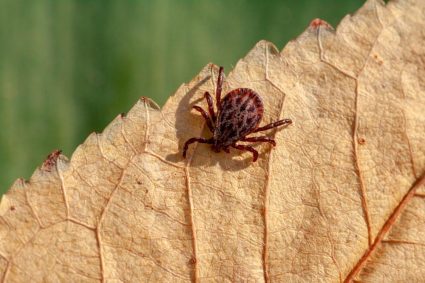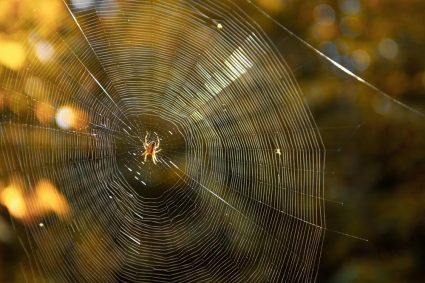
Stink bugs, or shield bugs, are a common garden pest known for their unpleasant odor when disturbed or crushed. These bugs can wreak havoc on your garden, and finding an effective way to eliminate them can be a challenge. One natural solution that often arises is Pyrethrum, a natural insecticide derived from Chrysanthemum flowers. But does Pyrethrum actually kill stink bugs? Let’s delve into the details.
Yes, Pyrethrum does kill stink bugs. It is a natural insecticide that targets the nervous systems of these pests, causing paralysis and death. However, it is most effective when the insect is directly contacted at the time of application and does not leave a residual effect for future protection. Therefore, multiple applications are often necessary for effective stink bug control.
What is Pyrethrum?
Pyrethrum is a natural insecticide derived from the dried flower heads of Chrysanthemum cinerariifolium and Chrysanthemum coccineum plants. The insecticidal compounds present in these species are called pyrethrins, which are toxic to insects.
Pyrethrum has been used for thousands of years as an insecticide and is considered an organic insecticide when not combined with synthetic adjuvants. It is effective because it targets the nervous systems of insects, causing rapid knockdown or temporary paralysis.
How Does Pyrethrum Work on Stink Bugs?
Pyrethrum works to kill stink bugs by targeting their nervous systems, causing paralysis and death. However, the exact molecular mechanism and the level of effectiveness against stink bugs are not explicitly detailed in the search results.
It’s important to note that Pyrethrum is most effective when the insect is directly contacted at the time of application. It does not leave a residual effect to protect against future stink bugs. This means that multiple applications may be necessary to control stink bugs effectively, especially in an edible food garden.
How to Use Pyrethrum for Stink Bugs
Using Pyrethrum to eliminate stink bugs involves a simple process. First, identify the infested areas. Then, choose a pyrethrin-based product suitable for stink bug control, such as a fogger or aerosol insect spray. Apply the product according to the instructions on the label, ensuring that you cover any food, dishes, and cooking utensils before using the fogger. Keep children and pets away from the treated area until the fog has settled and the area has been ventilated.
After application, monitor the treated areas to ensure the stink bug population has been eliminated. Reapply the pyrethrin-based product as necessary.
Risks and Potential Harm of Pyrethrum
While pyrethrins are considered relatively safe for humans and animals, they can still pose risks and potential harm. High levels of pyrethrins can cause dizziness, headache, and nausea in humans. Farmers who use pyrethrins have an increased risk of developing leukemia. Pyrethrins are also extremely toxic to bees, fish, and other aquatic animals.
Comparing Pyrethrum with Other Pest Control Methods
Pyrethrum can be an appropriate choice for use in edible food gardens, but since it does not leave a residual to protect against future stink bugs, multiple applications would be necessary.
Insecticidal soaps and neem oil are also effective against stink bugs, especially early in the season. Pyrethroid insecticides are considered effective but have short residual control and may not be the best fit for integrated pest management systems.
Natural Alternatives to Pyrethrum
Several natural alternatives to Pyrethrum exist for pest control, including diatomaceous earth, neem oil, soap sprays, iron phosphate, Bt (Bacillus thuringiensis), milky spore, and peppermint oil.
In conclusion, Pyrethrum can be effective against stink bugs, but its effectiveness may be limited compared to other pest control methods. It may be necessary to use a combination of methods, including insecticidal soaps, neem oil, and pyrethroids, to achieve the best results in controlling stink bug populations.
Frequently Asked Questions
What are synthetic adjuvants mentioned in the context of Pyrethrum?
Synthetic adjuvants are substances added to insecticides like Pyrethrum to enhance its effectiveness. They can improve the insecticide’s spread, absorption, or adherence to its target. When Pyrethrum is mixed with these synthetic adjuvants, it is no longer considered an organic insecticide.
What is the ‘knockdown’ effect of Pyrethrum?
‘Knockdown’ is a term used in pest control to describe the rapid, initial impact of an insecticide. In the case of Pyrethrum, its knockdown effect refers to the immediate paralysis it causes in insects, which often leads to their death.
You mentioned that Pyrethrum doesn’t leave a residual effect. What does that mean?
A residual effect in pest control refers to the ongoing or long-lasting effectiveness of a pesticide after its application. In the case of Pyrethrum, it does not leave a long-lasting residue that continues to kill stink bugs, which means it will only affect those insects that are directly contacted at the time of application.
What are pyrethroids mentioned in the comparison with other pest control methods?
Pyrethroids are synthetic chemical insecticides that act like Pyrethrum. They are designed to mimic the insecticidal properties of the natural compound, but they are often more potent and have a longer residual effect compared to Pyrethrum.
What is integrated pest management (IPM)?
Integrated Pest Management (IPM) is an effective and environmentally sensitive approach to pest management that relies on a combination of common-sense practices. It uses current, comprehensive information on the life cycles of pests and their interaction with the environment. This information, in combination with available pest control methods, is used to manage pest damage by the most economical means and with the least possible harm to people, property, and the environment.












